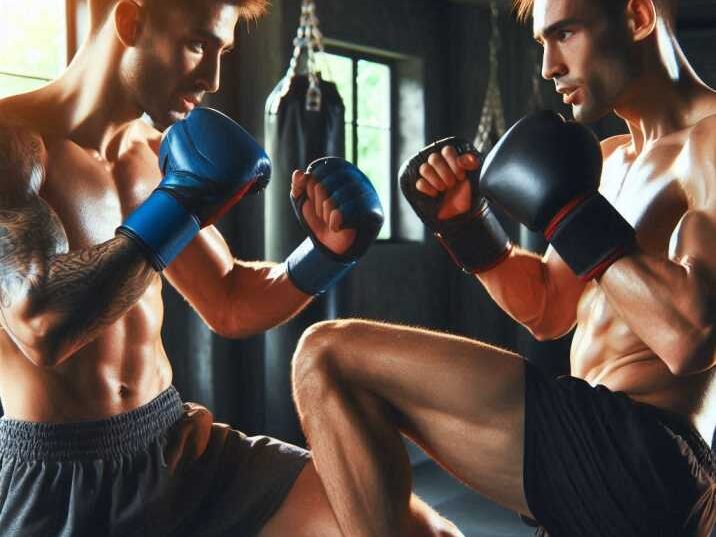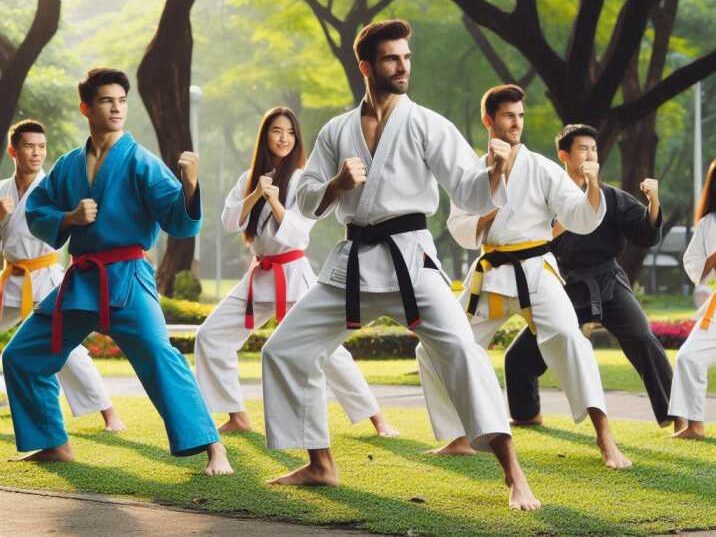When it comes to self-defence, choosing the right martial art can make all the difference. For those looking to protect themselves in real-life situations, understanding which martial arts are most effective for street fighting is crucial. In this article, we will explore various martial arts for street fighting, disciplines, their effectiveness in street scenarios, and how they can enhance your focus and discipline.
Introduction
Table of Contents
Martial arts are not just about fighting; they teach discipline, respect, and self-control. For students and individuals looking to improve their self-defence skills, it’s essential to understand which martial arts are most effective for street fighting situations. In addition to providing self-defence skills, training in martial arts also requires concentration and discipline, which can translate to improved focus in school and other activities.
Let’s dive into the different martial arts, explore their strengths, and determine which one might be the best martial arts for street fighting.
Best Martial Arts for Street Fighting
1. Brazilian Jiu-Jitsu (BJJ)
Overview:
Brazilian Jiu-Jitsu (BJJ) is a grappling martial art that specializes in ground fighting and submission techniques. It was developed from traditional Japanese jiu-jitsu and has evolved to focus on leverage and technique rather than brute strength. This makes it suitable for individuals of all sizes, allowing smaller practitioners to defend themselves effectively against larger opponents.
Techniques:
BJJ employs various techniques, including joint locks and chokes. Joint locks manipulate an opponent’s joints into uncomfortable or painful positions, forcing them to submit. Chokes restrict airflow, putting pressure on the throat or arteries, and can lead to unconsciousness if not released promptly. These techniques are highly effective in controlling and neutralizing an opponent.
Strengths:
BJJ shines in street fighting situations, especially since many altercations end up on the ground. It empowers a smaller person to leverage technique and body mechanics to dominate a larger opponent. Furthermore, the skills learned in BJJ allow practitioners to maintain control in chaotic environments, making it an invaluable self-defence system.
2. Muay Thai
Overview:
Muay Thai, often referred to as “The Art of Eight Limbs,” is a striking martial art from Thailand that incorporates punches, kicks, elbows, and knees. This diverse range of techniques makes Muay Thai one of the most comprehensive striking arts available. Its training methods emphasize both physical conditioning and technique, allowing practitioners to deliver powerful strikes.

Techniques:
In Muay Thai, elbow strikes are used for powerful close-range attacks, delivering devastating blows that can incapacitate an opponent quickly. Knee strikes are effective during clinches, where fighters grapple closely and can utilize their knees to attack vital areas. These techniques are designed for both offensive and defensive strategies in a fight.
Strengths:
The effectiveness of Muay Thai in street fighting comes from its versatility in striking from different angles and distances. The rigorous training in Muay Thai develops significant conditioning and stamina, enabling practitioners to maintain a high level of performance during altercations. Additionally, the emphasis on clinching provides essential skills for controlling opponents in close quarters.
3. Boxing
Overview:
Boxing is a popular martial art that focuses primarily on punches and footwork. Known for its straightforward and effective techniques, boxing teaches students how to throw powerful punches while maintaining mobility. The sport emphasizes head movement, footwork, and defensive strategies to evade attacks while delivering strikes.
Techniques:
Key techniques in boxing include jabs and hooks, which are fundamental punches used to create openings in an opponent’s defence. A well-timed jab can disrupt an opponent’s rhythm and set up for stronger punches, while hooks deliver significant power. Additionally, footwork is crucial in boxing, allowing fighters to position themselves advantageously and evade incoming strikes.
Strengths:
Boxing is particularly effective in street fighting due to the quick and powerful punches that can be delivered in rapid succession. The training develops exceptional hand-eye coordination and reflexes, enabling practitioners to evade and counterattack effectively. Boxers are trained to maintain composure under pressure, which is vital in unpredictable street scenarios.
4. Krav Maga
Overview:
Krav Maga is a self-defence system developed by the Israeli military, emphasizing practical techniques for real-world situations. Unlike traditional martial arts, Krav Maga focuses on survival and effectiveness in potentially life-threatening scenarios. It incorporates elements from various fighting styles, making it adaptable and efficient.
Techniques:
Key techniques in Krav Maga include disarming techniques, which are designed to neutralize armed attackers quickly. Practitioners are trained to respond to threats with counterattacks, using immediate, aggressive responses to gain the upper hand. This practical approach prepares individuals for various confrontational situations, including those involving weapons.
Strengths:
The primary strength of Krav Maga lies in its focus on real-life scenarios, making it particularly effective for self-defence. By combining striking and grappling techniques, Krav Maga provides a well-rounded skill set for various situations. The training instills confidence and decisiveness, empowering individuals to react effectively in emergencies.
5. Judo
Overview:
Judo is a Japanese martial art centred on throws and holds, emphasizing the use of an opponent’s force against them. Practitioners learn to leverage balance, movement, and timing to execute effective techniques. Judo promotes the philosophy of maximizing efficiency and control in combat.
Techniques:
In Judo, throws are executed by using the opponent’s weight and momentum, often leading to a quick takedown. Additionally, holds or pins are utilized to immobilize an opponent, preventing them from escaping or countering. These techniques are designed to gain control over an opponent in various situations.
Strengths:
Judo is effective in street fighting due to its focus on quickly taking an opponent down, which can prevent further escalation of the fight. The grappling skills developed in Judo enhance a practitioner’s ability to control an opponent in close quarters. Furthermore, Judo training improves balance, coordination, and strength, essential attributes for any self-defence scenario.
Table of Information about Best Martial Arts for Street Fighting
| Martial Art | Focus | Techniques | Strengths |
|---|---|---|---|
| Brazilian Jiu-Jitsu | Grappling | Joint locks, chokes | Effective against larger opponents |
| Muay Thai | Striking | Elbows, knees, kicks | Versatile in striking skills |
| Boxing | Striking | Punching | Strong footwork and speed |
| Krav Maga | Self-defense | Disarming, strikes | Realistic self-defense techniques |
| Judo | Grappling | Realistic self-defence techniques | Effective for close combat |

Conclusion
Choosing the best martial art for street fighting depends on your goals and personal preferences. Each martial art offers unique techniques and strengths that can be effective in self-defence situations. Brazilian Jiu-Jitsu is excellent for ground control, Muay Thai and boxing are great for striking, while Krav Maga provides realistic self-defence skills. Judo enhances your grappling abilities, making it a valuable addition to any self-defence toolkit.
Training in any of these martial arts can help improve not only your self-defence skills but also your focus and discipline in other areas of life. As you consider which martial art to pursue, remember that the best choice is one that aligns with your personal interests and physical abilities.
FAQs
- What is the most effective martial art for street fighting?
- Brazilian Jiu-Jitsu is often considered effective due to its focus on ground fighting and submissions.
- Can I learn self-defence through martial arts?
- Yes, martial arts like Krav Maga and Muay Thai provide practical self-defence techniques.
- Is striking or grappling more important in street fights?
- Both are important; grappling is crucial if the fight goes to the ground while striking is vital for standing encounters.
- How long does it take to become proficient in martial arts?
- Proficiency varies by individual, but regular training can lead to noticeable skills in 6 months to a year.
- Can children learn martial arts for self-defence?
- Absolutely! Many martial arts schools offer programs specifically designed for children, focusing on self-defence, discipline, and confidence.


